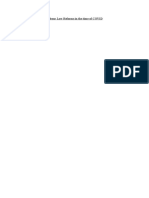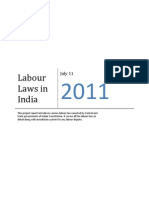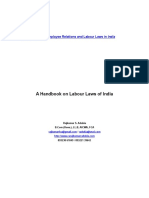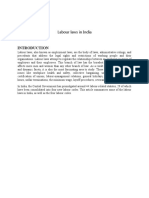0% found this document useful (0 votes)
19 views2 pagesPGDLLER Program
The Post Graduate Diploma in Labour Laws and Employee Relations (PGDLL&ER) consists of three semesters covering various aspects of industrial relations, labour welfare, and laws related to wages, social security, and employment. Each semester includes specific laws, case studies, and topics aimed at understanding the evolution and current practices in labour laws. The curriculum is subject to change based on updates in legislation.
Uploaded by
sishirCopyright
© © All Rights Reserved
We take content rights seriously. If you suspect this is your content, claim it here.
Available Formats
Download as PDF, TXT or read online on Scribd
0% found this document useful (0 votes)
19 views2 pagesPGDLLER Program
The Post Graduate Diploma in Labour Laws and Employee Relations (PGDLL&ER) consists of three semesters covering various aspects of industrial relations, labour welfare, and laws related to wages, social security, and employment. Each semester includes specific laws, case studies, and topics aimed at understanding the evolution and current practices in labour laws. The curriculum is subject to change based on updates in legislation.
Uploaded by
sishirCopyright
© © All Rights Reserved
We take content rights seriously. If you suspect this is your content, claim it here.
Available Formats
Download as PDF, TXT or read online on Scribd
/ 2























































































